Kasha, an earthy and fiber-filled grain, is one of the oldest known food staples in Eastern European cuisine. Also known as buckwheat groats, kasha is popular with descendants of Ashkenazi and Yiddish-speaking Jews from Eastern Europe and Russia. In this preparation known as Kasha Varnishkes, toasted kasha is tossed with egg noodles, fat, salt and pepper to create a warm, comforting meal. In America, the most popular noodle choice for this dish is bowtie pasta, leading to the recipe’s American nickname– Kasha and Bows.
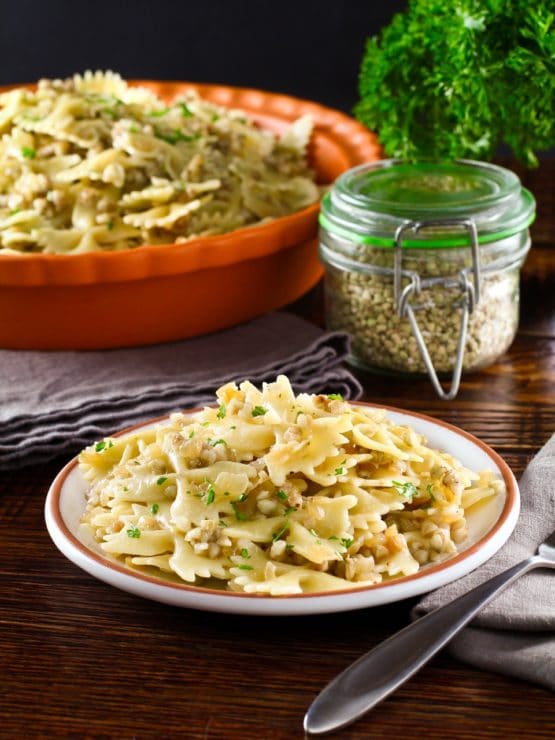
When cooking Ashkenazi Jewish cuisine, we might be tempted to steer clear of unhealthy traditional ingredients like schmaltz (rendered chicken fat). And yet, nothing can compare to the way that schmaltz enhances a dish like Kasha Varnishkes. Substitutes pale in comparison to the real deal.
When faced with the decision to make a dish either healthy or authentic, for me authentic wins hands down. Dishes like Kasha Varnishkes are a “treat” and should be enjoyed that way. If that means coating my pasta and kasha in melty, savory schmaltz, so be it.
Kasha Varnishkes might be considered the ultimate in Ashkenazi comfort food. It’s great as a side dish, or as a simple entrée for a chilly winter evening. Butter makes a creamy, tasty substitute for those who can’t handle the idea of chicken fat. Olive oil will work too. But please, don’t fear the schmaltz. While your cardiologist might frown, your tastebuds will certainly thank you. As the immortal Julia Child once said:
Everything in moderation… including moderation.
~Julia Child
Recommended Products:
We are a participant in the Amazon Services LLC Associates Program, an affiliate advertising program designed to provide a means for us to earn fees by linking to Amazon.com and affiliated sites. As an Amazon Associate I earn from qualifying purchases.
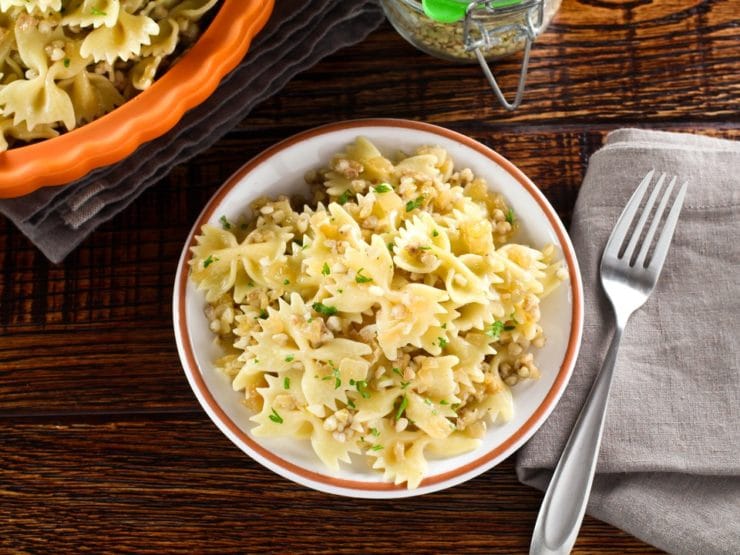
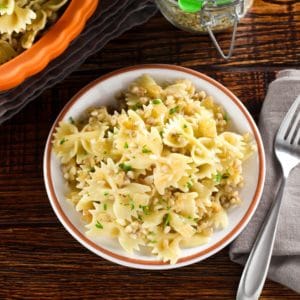
Kasha Varnishkes (Kasha and Bows)
Ingredients
- 1 large egg, beaten
- 3/4 cup uncooked kasha (also called buckwheat groats - medium or coarse grain)
- 1/3 cup schmaltz, butter, or olive oil divided (or more to taste)
- 2 onions, chopped
- 1/2 pound bowtie pasta
- Salt and pepper
- 1 tablespoon fresh parsley, chopped (optional)
NOTES
Instructions
- Preheat oven to 325 degrees F. In a small bowl, mix together kasha, beaten egg, ¼ tsp of salt and a dash of black pepper.

- Stir with a fork until the kasha is well coated. Spread mixture into a small oven-safe nonstick skillet in an even layer.Place in the oven and let the mixture cook for 15-20 minutes until it's dried all the way through. This will “toast” the kasha.

- As the kasha is toasting, heat 2 tbsp schmaltz, butter, or olive oil in a large skillet or sauté pan over medium. Fry the diced onions for 15-20 minutes, stirring often, until they are very tender and caramelized golden brown. Reserve both the onions and the oil.Meanwhile, boil 3 cups of water and ¼ tsp of salt in a medium saucepan for the kasha. In a separate pot, boil about 8 cups of salted water—this is for your bowtie pasta.

- Remove the kasha from the oven and break it apart completely with a fork, separating all the chunks into small pieces.

- Pour the kasha into the medium saucepan with 3 cups of boiling water and stir. Cover the pot, reduce heat, and simmer for about 15 minutes. Check periodically to make sure the kasha isn't becoming overly dry or burning.

- When the kasha is nice and fluffy and the water is fully absorbed, after about 15 minutes of cooking, remove from heat and fluff with a fork. Break apart any clumps that may have formed.

- Pour the cooked kasha and the sautéed onions with oil over the pasta. Add the remaining 3 tbsp of schmaltz, butter, or oil to the pasta.

- Mix all ingredients together until well combined. Add more schmaltz, butter, or oil, if desired, to moisten the pasta. Season generously with salt and pepper. Serve hot. Garnish with chopped fresh parsley, if desired.

Nutrition

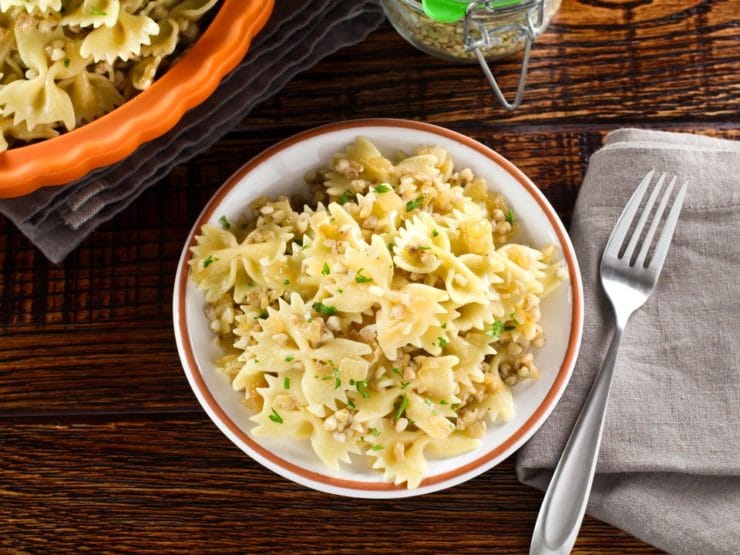
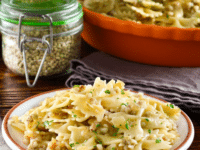
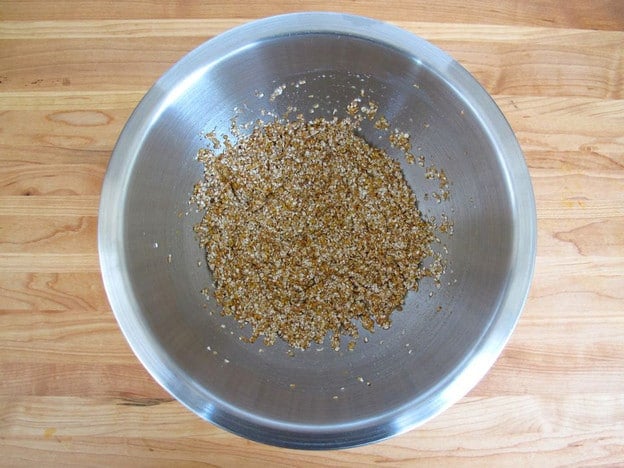
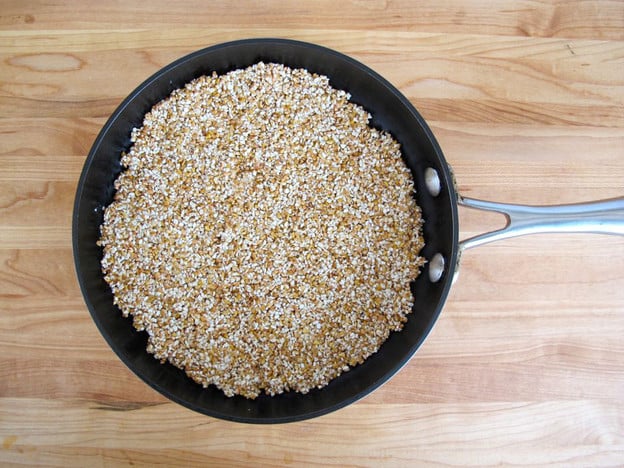
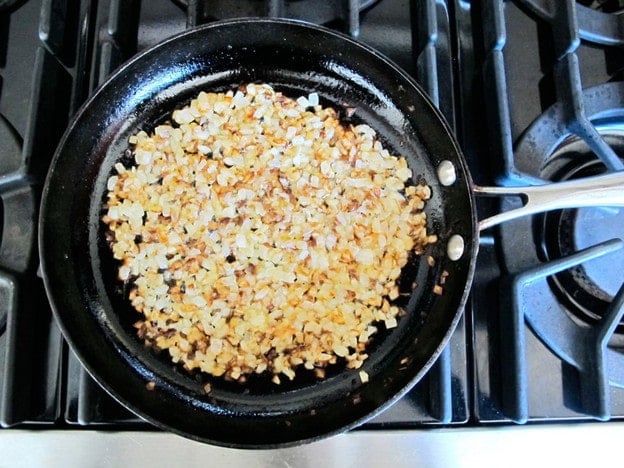
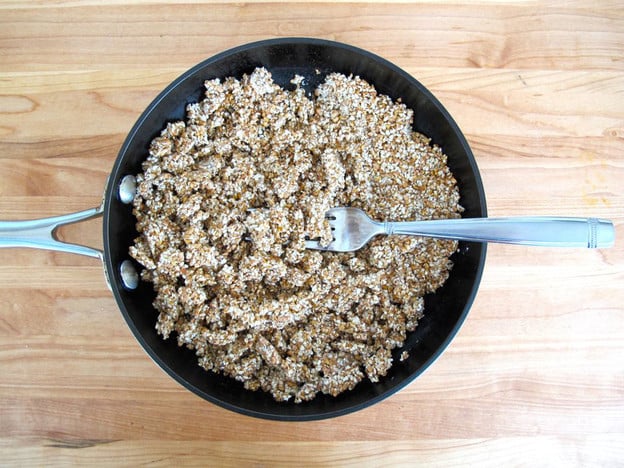
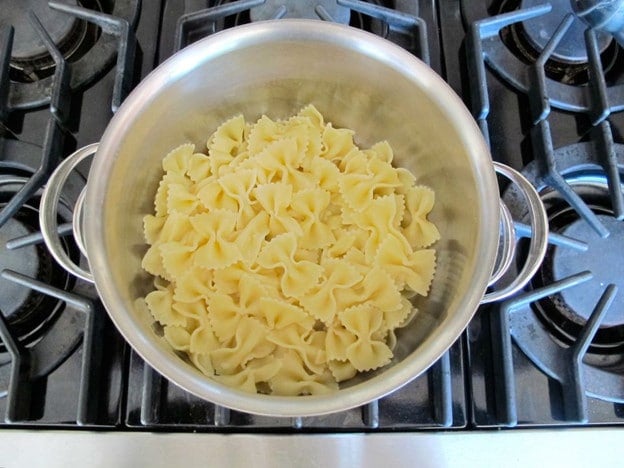
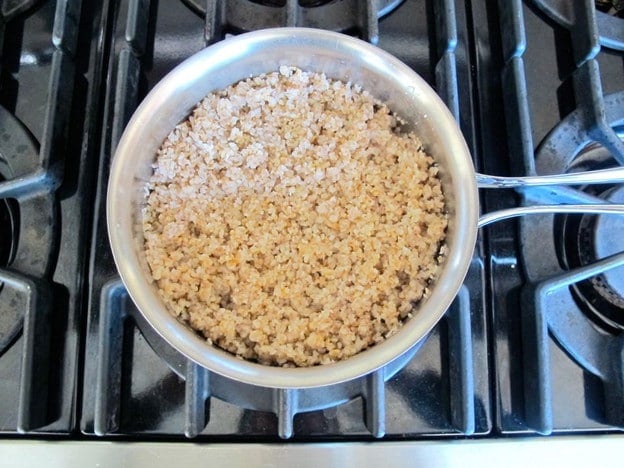
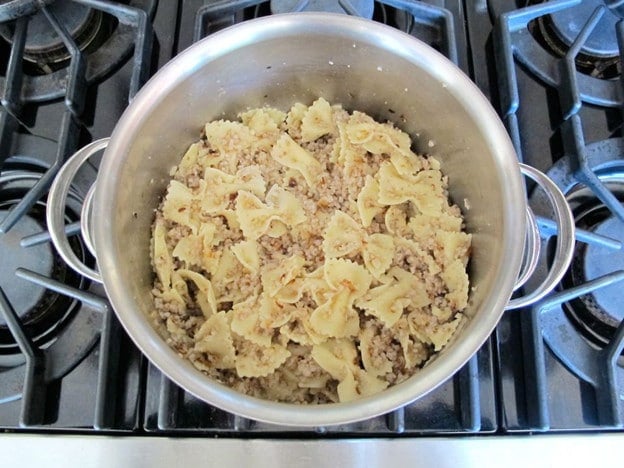
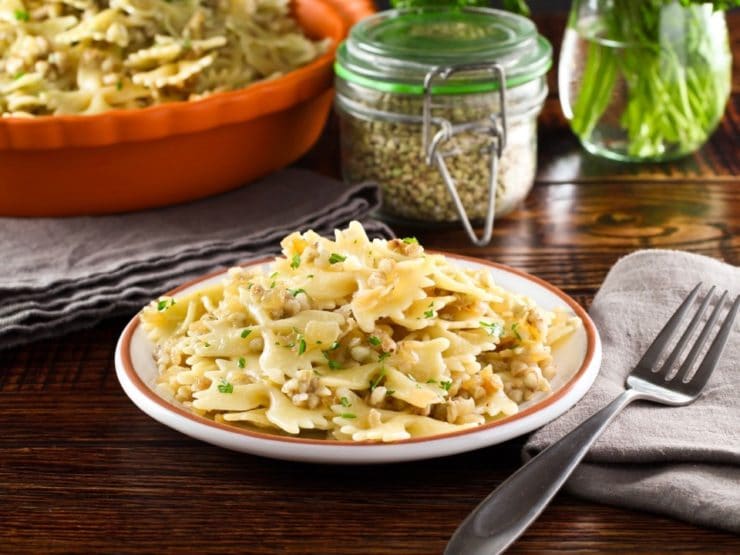


Re. your Kasha Varnishkes Recipe: Love your recipe! Just like my bubbe used to make!!! To add more flavor, can chicken broth be added or somehow cooked into this recipe?
Hi Fay! You could replace the 3 cups of boiling water with 3 cups of low sodium chicken stock. Just keep in mind that in this case, if you’re wanting to keep it kosher, you would use olive oil or schmaltz for the oil. If that’s not a concern, you’re all good!
i followed your instructions to a T but my kasha came out mushy. what do you think i ddid wrong?
Hi Carol, I’m not sure — mushy typically means overcooked, so perhaps your stove runs hotter than mine? Try cooking for 5 minutes less next time to see if that helps.